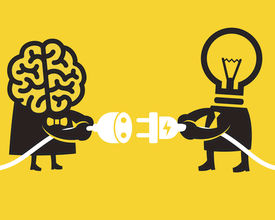An important trend that will mark the upcoming year is event co-creation. While co-creation isn’t exactly a new concept, it’s strengthened its image as a highly efficient engagement tool.
People don’t have to rely on experts or renowned speakers anymore. They don’t have to depend on event professionals when it comes to choosing the most suitable event experiences, or worry about having meaningless experiences.
As Francis Gouillart, president of the Experience Co-creation Partnership, explains for the Harvard Business Review, "Co-creation involves giving customers the right to participate in the design of their own experience, not only by giving input about what they like and don’t like as in traditional market research but also by giving them tools that allow them to become actual designers."
Applying this definition to the events world, we can say that co-creation is when we give our attendees the chance to design their own experience. In other words, the individualistic approach has shifted to collective wisdom and active co-creation. Large audiences have gained the power to decide how the event should unfold, and attendees find themselves empowered to make certain choices that will define their event experience accordingly to their needs and expectations.
Event co-creation shapes both the present and future of the meetings industry. By fostering collaboration between the attendees, co-creation becomes the ultimate tool for real-time contributions and value. So if you want to level up your attendees’ experience by letting them co-create the event itself, here’s how you can do it:
Tip 1. Create a safe environment
For guests to be able to engage efficiently, they must feel comfortable and safe. Ask the moderator or speaker to help you accomplish this goal by involving the attendees with an initial exercise. The rules are simple: each guest must shake hands with the person next to them (someone they don’t know, not an acquaintance or friend) and share a bit of personal information—name, profession, location, expectations for the event, etc. This will help the attendees to open up and be more willing to participate in co-creative activities.
Tip 2. Set up a series of improvisational theatre activities
Improvisational theatre is an extraordinary exercise for co-creation. It can be done between two or more people. Here’s how it works: one person starts by saying a word (for example “I”) and the other person must continue by saying another word (for example “am”). This activity must be repeated, with each person in the group saying one word per turn. It often culminates with a (sometimes nonsensical or incoherent) story.
Remember, each attendee must go at least once. This activity can be extremely fun, plus it will help your guests start to feel comfortable with the feeling of uncertainty. By encouraging your audience to involve themselves in the improvisational theatre, you’ll open then up to co-creation and the willingness to engage with themselves.
Tip 3. Increase event engagement by fostering variation
Avoid using the Q&A session as the only moment for interaction. You won’t achieve co-creation from it. You must provide variety and a series of activities that will involve co-creative situations. For example, during the pre-event, you can ask the attendees to vote on which speakers they would like to hear or what topics they would like to tackle. During the event, encourage your guests to co-create through a series of common activities that require moving around the room and sharing ideas with each other.
Tip 4. Encourage the speaker(s) to interact with the attendees before the event
Here’s how most events begin: Attendees enter the event room, sit down, the session starts, the moderator presents the first speaker, the attendees applaud, and the speaker starts talking. There’s no initial interaction between the attendees and the speaker, which usually puts a barrier between the audience and what’s happening on the stage. This format makes it difficult for the attendees to open up and engage in co-creative talk.
To avoid this from happening, encourage the speaker to interact with the guests before the event. He or she can enter the room 10 minutes before the session and engage people in small talk. This will help everyone feel more relaxed, and will close up some of that emotional distance between the audience and the stage.
Tip 5. Ensure a group activity based on finding solutions
Event co-creation nowadays is about producing knowledge. Speakers aren’t the “ultimate experts” anymore—attendees can also be a great source of information and wisdom. To start exploring this potential, engage your guests in co-creative activities that require finding solutions to recurrent problems.
Wrap-up
Although 'co-creation' is not a new term, the event industry is only just starting to realize its true potential. By encouraging your attendees to take part in co-creative activities, you’ll change the spotlight from the stage to the audience. Make your guests the protagonists and set up a new tone for the event, where everyone is equal and working for the common interest.








